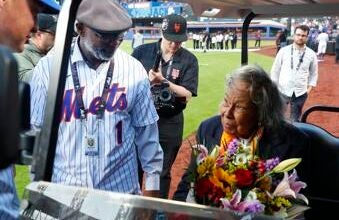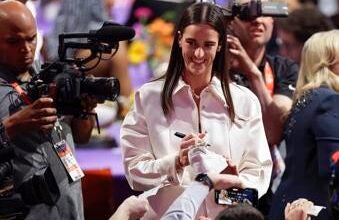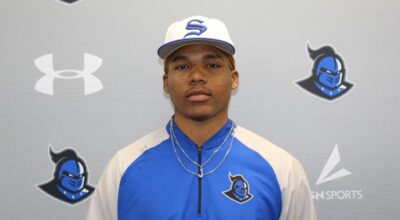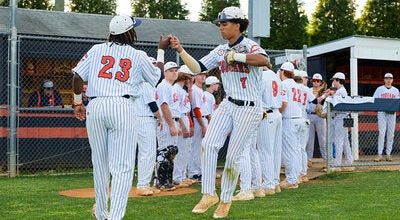Tyler Freeze's comeback
Published 12:00 am Monday, June 13, 2011
By Mike London
mlondon@salisburypost.com
LANDIS — The days when Tommy John surgery was experimental and revolutionary are in the past, but the procedure is still serious.
Anytime you’re talking about replacing elbow ligaments on teenagers it’s serious business, and the long, winding scar that runs from South Rowan Legion assistant coach Tyler Freeze’s elbow to his upper arm is a reminder of just how serious.
Freeze, a Carson graduate, is a catcher at Pfeiffer.
That makes him a little unusual. The overwhelming majority of Tommy John patients are pitchers, including high-profile ones such as Billy Wagner, Tim Hudson and John Smoltz, who came back better than ever from their operations, and Stephen Strasburg, a No. 1 draft pick, who like Freeze is trying to make his way back.
For the youngsters reading this, Tommy John is a real person, who was a fine southpaw pitcher in the 1960s and early 1970s. Not blessed with exciting velocity, he relied on sliders and curveballs, and the ulnar collateral ligament in his left elbow was frayed, fried and frazzled by 1974.
Rather than retire peacefully at age 31, John agreed to radical surgery that was given a 1 percent chance of saving his career by Dr. Frank Jobe, the medical pioneer who performed the operation that eventually would be named after its first survivor.
John spent four hours on Jobe’s operating table, and then his left arm was immobilized in a cast for 16 weeks. His recovery period included the entire 1975 season, but he returned to the mound to win 10 games for the Dodgers in 1976, in what was considered a major miracle at the time.
With his “bionic” elbow, John lasted in the majors until he was 46 years old. He won 124 games before his surgery — 164 after it.
Like John, Freeze had a damaged elbow ligament that made it difficult for him to throw with his normal velocity, but he ignored the pain in his elbow a long time.
Elbow injuries requiring Tommy John surgery can occur either through a sudden, painful jolt or the accumulation of years of wear and tear. Put Freeze is in the wear-and-tear camp.
“It was kinda weird,” Freeze said. “I had pain in the elbow my junior and senior years at Carson, and I was playing almost year round with fall ball, school ball and Legion ball. I would’ve said something, but we really didn’t have a backup at that time. Joseph (Basinger) was hurt, and a team has to have a catcher. I took Ibuprofen and I played.”
Part of that refusal to accept that he was hurthad something to do with Freeze losing his sophomore year to two freak eye injuries. He wasn’t going to sit down again. Not if he could see, and not if he could walk.
It was a mystery for a long time as to why Freeze, a lefty swinger and a right-handed thrower, batted .385 as a high school junior but only .284 as a senior.
Now we know. That ailing elbow on his lead arm had to affect his swing, but he still drove in 44 runs his last two high school seasons.
Freeze was Carson’s Offensive MVP as a junior. As a senior, he earned the Cougar Award for his hustle, his leadership and his defense.
Freeze drove in 38 runs in the summers of 2009 and 2010 as the starting catcher for South’s Legion team and played well enough defensively — he was great at blocking balls in the dirt — that no one realized how much he was hurting.
He signed with Pfeiffer last summer, but his freshman season never happened.
“Once I got to Pfeiffer it got worse, and my elbow hurt just warming up,” Freeze said. “In fall practice one day, we were working on throwing down to second base and I just floated one down there that sailed into center field. I couldn’t raise my arm past my chest, and I was shaking.”
An MRI test revealed a severely damaged right elbow, like you’d expect to see on an overworked pitcher who’d thrown a million breaking balls.
“There was a lot of scar tissue built up and the ligament was three-quarters torn,” Freeze said. “They told me I had the option o trying to rehab it, but it had hurt so bad for so long, I wanted to go ahead and take a redshirt year and have the surgery.”
There’s been great progress since the original Tommy John surgery. Freeze’s operation took place on Dec. 14 in Charlotte, and it lasted roughly 90 minutes, 21/2 hours less than John’s original ordeal.
The toughest part for Freeze were the two weeks following the operation.
“I was stuck in cast at a 90-degree angle,” he said. “It was hard to brush my teeth left-handed. The worst part was taking a shower with a trash bag over my arm to keep it from getting wet.”
He wore an arm brace for the next two months and began rehab at OrthoCarolina and worked with Pfeiffer trainers.
“You start with little things like wrist exercises and even picking up marbles,” Freeze said. “I couldn’t do any running for months because even though you don’t think about it, you use your arms a lot when you’re running.”
Freeze’s first baseball activities, about four months post-op, were limited to throwing 45 feet for 10 minutes at a time and hitting off a tee.
But now he’s seeing weekly progress. He’s in his second month of throwing from a distance of 60 feet and sees light at the end of the tunnel.
Soon, he’ll be permitted to play catch from 90 feet (the distance from home to third). After a month or so at that distance, he’ll try 120 feet (home to second base).
The standard Tommy John recovery time has been reduced by the marvels of modern medicine to 10-to-12 months. Since he’s not a pitcher and isn’t going to be asked to throw sliders off a mound, Freeze hopes to be nearly good as new by Sept. 1 and expects to take part in fall drills with his Pfeiffer teammates.
“I can’t tell you how much I’m looking forward to being a whole baseball player again,” Freeze said.
Freeze hasn’t sat around the house this summer. He’s spent his nights passing on his skills and knowledge to South’s catchers.
Hopefully, he’ll be a pain-free catcher and hitter for the first time in years this fall. There are no guarantees with Tommy John, but the success rate has climbed to about 90 percent.
When Freeze watched the TV highlights on Sunday, he saw Washington’s Jordan Zimmermann, a 25-year-old with a newly reconstructed elbow, pitch seven scoreless innings against San Diego. That had to make him smile a little bit.





